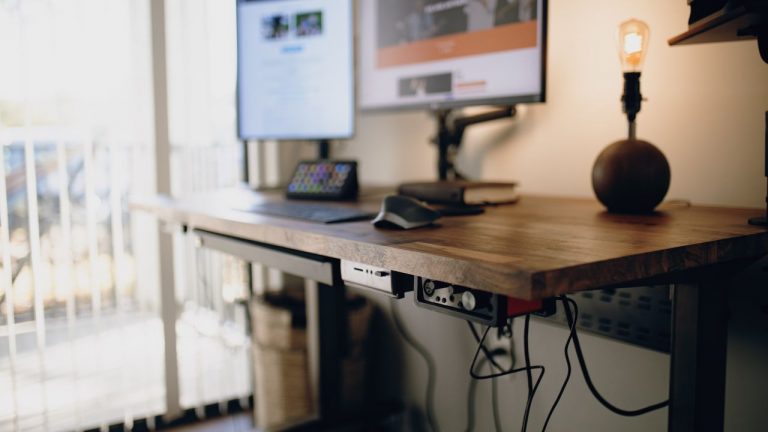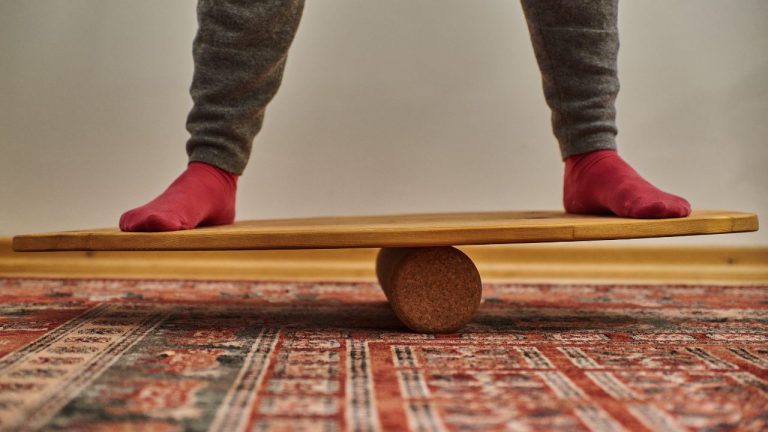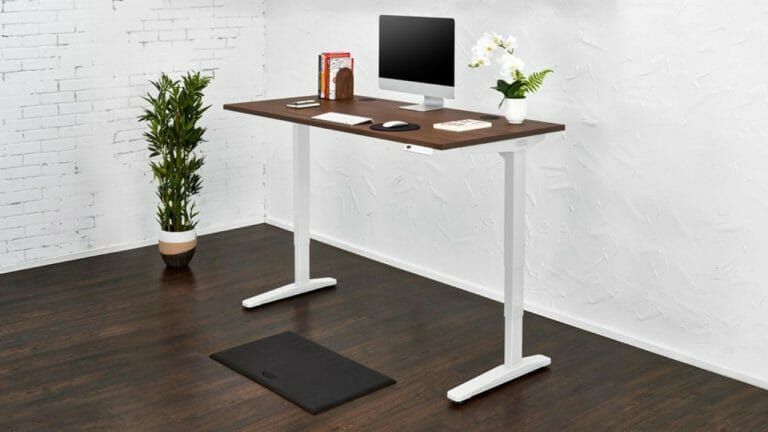5 Ways To Remove Glue From Office Desk
It is common to drop some glue on the desk while working. Spilled glue creates quite a mess, and sometimes you have to go the extra mile to clean it off your desk.
Depending on the type of glue on your desk, you can use normal glass cleaner, kitchen oil, nail polish remover, or commercial cleaning chemicals to clean the glue off your desk. For tougher glue stains, you can consider sanding the affected surface.
The process itself is simple, but you should be careful, otherwise, you might damage your desk. So here is what to do when you drop some glue on your desk.
Get Rid Of The Excess Glue
I am a clumsy worker myself, and this has happened to me quite a lot while working with papers and glue. When I accidentally drop some glue on the desk, the first thing that I do is scrape off the excess adhesive from the desk.
To do this, you will need something with a hard edge. Examples are cards or something similar. I had an old credit card that I did not use, so I would scrape the excess glue from my desk with it.
Clean It Off Before It Dries Up
Glue solidifies when it dries up. If I notice my spilled glue the moment it falls, I clean it up as soon as possible. It is because when you leave it out in the open, it will dry up and become harder to remove.
After I remove the excess glue from the desk, I normally use a soft fabric to suck up the residue that’s on the surface. This cleans up most of the affected parts instantly.
However, there are other glues, such as superglue, that dry up fast. Or, more simply, the glue may have spilled while you were not present and has since dried up. Do not worry, because there are solutions for that as well.
Using Soft Chemicals To Clean Off The Glue
I always prefer to start with softer and easier methods. Also, immediately moving on to using harsh Chemicals isn’t a good option at all times. Here are a few options if you want to use soft chemicals:
1. Using Glass Cleaner
Glass cleaner is possibly the best chemical to remove paper glue from desks in my opinion. First, apply some cleaner to the affected area. Windex works best in my opinion.
Now, wait some time for the cleaner to soften up the glue. Now use any hard object with a blunt edge, such as a plastic putty knife, to scrape it off the desk.
2. Using Normal Kitchen Oil
This is a chemical that is always present in everyone’s kitchen. Oil works the same way as glass cleaner does, but there is a catch to it.
Oil takes much longer to soften the glue. Normally, you have to wait for an hour before it can show its magic. When the glue softens up, then you can follow the same scraping procedure.
3. Using Nail Polish Remover
Women are very familiar with this item. Nail polish remover has acetone in it. This is the chemical that dissolves nail polish and makes it easier to clean up.
Acetone works great, especially on super glue stains. Though, depending on the glue, you might need it in a higher concentration.
First, apply nail polish remover on the stains and then let it soften the glue. You can start scraping within minutes after application.
4. Using Rubbing Alcohol Or Vinegar
I used vinegar on the desk where it had only a little residue on the surface. It might not work too well with a high amount of glue, but it works pretty well on sticker residue and other glues in smaller quantities.
Soak a small piece of fabric in vinegar or rubbing alcohol. Then put the fabric on the glue stain. Leave it for some time and then start rubbing. Repeat the process until you get your desired result.
5. Using Petroleum Jelly
You might not have expected this to appear on the list, but here we are. Some glues respond well to petroleum jelly.
For it to work, you need to apply petroleum jelly to the affected area in a sufficient amount. Then you have to leave it overnight just like that.
The next day, you can get your plastic scraper and start removing the glue from the desk.
Commercial Chemicals To Clean Up Glue Residue
There are many glue removers available on the market. If the home remedies do not work, you might want to consider the commercial items. I use Goo Gone.
If you do not have any clear glue remover products, you can move to alternatives. Products that clean off motor oil and grease also clean off the glue from surfaces. So, look for products with these features and you will find success.
Using these products is usually as easy as applying and scraping. A piece of personal advice, always read the instructions on the product.
The second commercial product is paint thinner. A paint thinner can also effectively remove glue stains. However, you must not use it on wooden surfaces that have been varnished. This will definitely ruin the varnish. Glass surfaces are best for using paint thinner.
Physical Scraping Of Glue Stains
If you have a mess that is so big that none of the previous processes seem efficient, then my suggestion is to get yourself some sandpaper.
There are different types of sandpaper available on the market. The 600-grit sandpaper and the 1200 Grit sandpaper are most suitable for the job. This is due to the fact that these fine-grit sandpapers will work efficiently while being less likely to damage the desk’s surface.
Sand the affected surface until it is level with the desk’s surface. Be careful while sanding, as there is a probability of scraping parts that are fine. However, if done correctly, it will give your wooden desk a fine finished look.
Using Heat To Get The Glue Off
It might sound contradictory to use heat to get the glue stains off of a surface, especially when the glue becomes harder when it dries. However, if you heat some dried glue, then their sticky parts lose their grip and they come off pretty easily.
Using heat doesn’t mean it has to be extreme. You can simply use a hairdryer to heat the affected area. When it gets a bit heated, you can scrape it or peel it off the surface.
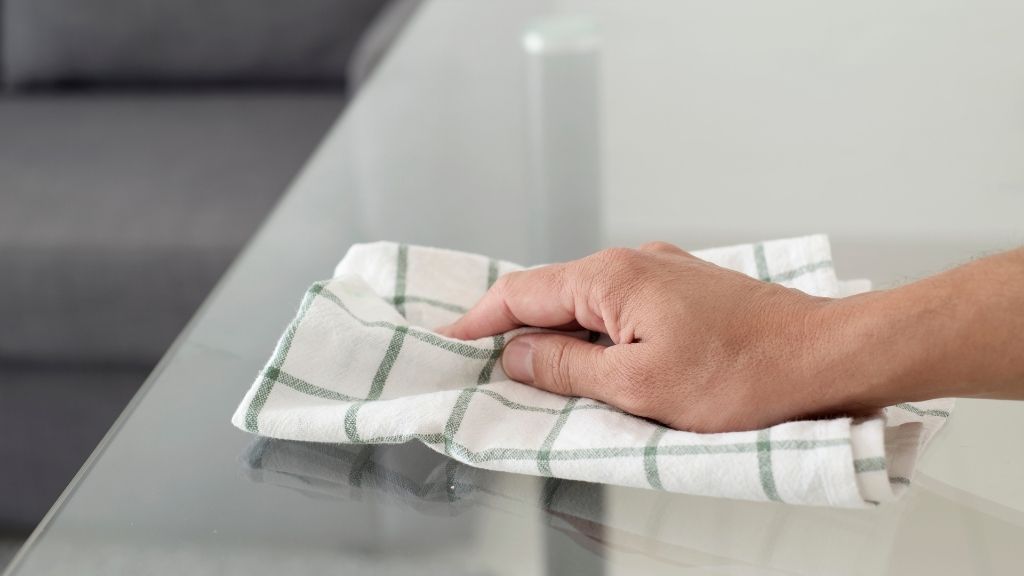
Focusing On Glass-Surfaced Desks
Up to this point, we have talked about common methods and ideas. Most desks have wooden surfaces, which is why these methods will work just fine for them. Most of these ideas will work for glasses as well, but there are a few key distinctions.
While cleaning your glass-topped desk, remember,
- Sanding isn’t for glass surfaces.
- Heavy objects will scratch your glass and it’s harder to fix than wood.
- When removing glue from glass-topped desks, use chemistry rather than force.
- You can use sharp but light objects such as a razor blade to help you on glass-topped desks, as a razor blade will most likely not harm your desk’s glass surface.
Things To Avoid While Removing Glue From Your Desk
I understand that you want your desk clean again as soon as possible. But if you approach it aggressively without consideration, then you might end up damaging the surface of your desk. So, here are some things to avoid when attempting to remove glue from your desk.
- Do not use sharp objects such as knives or blades on wooden surfaces.
- Do not use sandpaper on a glass surface, it will surely ruin the glass’s clarity and scar it.
- Do not use unnecessary force. It’s not a fight against the desk. Gentle and slow will get the desired result.
Precautions
From experience, I know that no matter how careful you are, you will make mistakes unintentionally. So here are some basic guidelines to prevent the scenario of dried glue on the desk.
- Use a waterproof sheet on your desk. If you set up a waterproof cloth, then the glue will never reach your desk in the first place. If you are unable to clean the sheet, simply replace it with a new one.
- Try any new commercial product in a smaller area first. If the results are what you desire, then move on to use it in the full affected area.
Frequently Asked Questions
Q. How do I get gorilla glue off my desk?
Gorilla glue is pretty strong and can be a hassle if things go south. The key is to start wiping the affected area with a paper towel as soon as you can. After that, apply acetone to the area with a small piece of fabric. Wipe it off with some patience.
If the glue has already dried, then acetone will help, but there will still be residue on the desk. You should use a blunt tool to scrape it off the desk and then use sandpaper to level the remaining area.
Q. Does WD-40 remove super glue?
WD-40 can remove super glue. For this to work, first, apply a generous amount of WD-40 to the affected area. Let it soak for five minutes. After that, use a blunt tool with an edge to scrape off the glue.
It will take significant effort and you might not get all the glue off the item on the first try. To make sure that you do not damage the item, you should re-apply some WD-40 and repeat the process until it is totally clean.
Q. Does Vaseline remove super glue?
Vaseline can help remove super glue from your skin and leather. It is not as effective as acetone, but it can be a great option for those who have sensitive skin.
Vaseline is not the go-to option to remove glue from desks, though. However, if you are going to use it to remove super glue from your skin, then start by washing your skin with soapy water. Then apply Vaseline and wait 10 minutes. After that, simply peel off the glue from your skin slowly and carefully.
Q. How do you remove old glue from metal?
There is little difference in removing old glue or any other dried-up glue. You can use any product with acetone or a little bit of goo-gone.
After you apply the product, wait for a little for it to dissolve the glue, and then the rest is the same as any other process.
Q. What is the best solvent for glue?
Acetone and rubbing alcohol are the best non-commercial solvents for most types of glue. Any product that dissolves glue contains some form of chemical that breaks down the molecular structure of the glue.
As mentioned before, a product that already contains acetone, such as nail polish remover, can be a good alternative
Q. Will Rubbing Alcohol Remove Gorilla Glue?
Rubbing alcohol can dissolve gorilla glue, though it is a slow process. You can soak a piece of fabric in rubbing alcohol and leave it on the affected area. Adding an additional heat source might help to speed up the process. It is, however, completely optional.
When the glue dissolves, wipe it off with the same piece of fabric. If there is any residue left on the desk, then repeat the process.
Q. How Do You Get Dried Super Glue Off A Desk?
There are multiple ways. The most common and efficient is using any dissolving item such as acetone, alcohol, or commercial glue remover. Additional scraping may be necessary depending on the amount of glue.
Final Words
Glue on the desk can create a really sticky situation. Sometimes it even damages important items and documents that are on the table. Working carefully is the go-to tip for all. However, mishaps happen to all of us.
You can now clean off that glue stain with all the information in your mind and avoid damaging it in the process. Also, now that you know what to do when things go south while working with glue, you will be even more efficient in your work and the fear of messing up won’t be as bad.

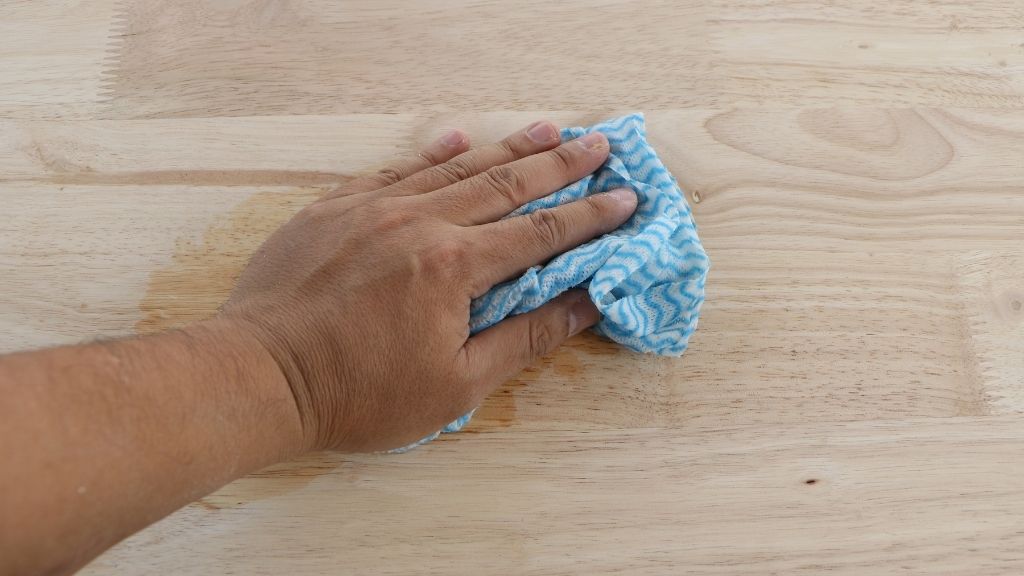
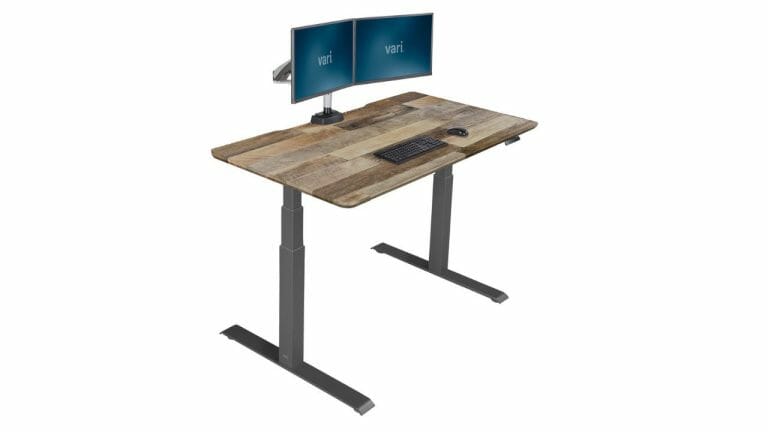
![Why Mesh Chair Sags? [Solutions]](https://homethereby.com/wp-content/uploads/2022/04/Why-Mesh-Chair-Sags-768x432.jpg)
